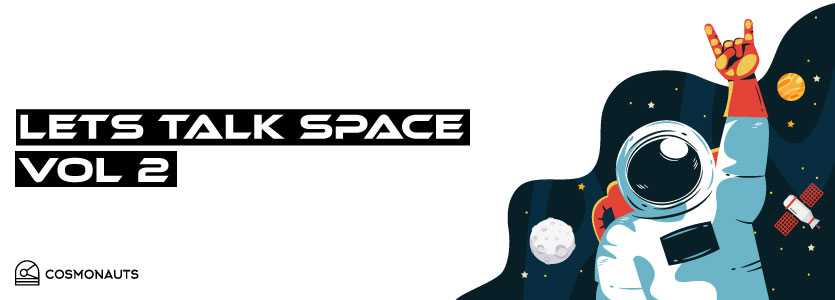Welcome to Let’s Talk Space, your monthly guide to the 5 most exciting news articles (in our opinion) within space and space tech. This month’s episode we discuss the air leak at the ISS, the Lunar Cruiser, the first ever mission to clean space debris and more!! We would also like to take this opportunity to announce some very exciting news.

1.Astronauts on board of the International Space Station have begun a hunt for the source of an air leak. It was first found in September 2019 however, as it was not major, nothing was done to find the source and stop it. Whilst the ISS has small leaks of air frequently, this one has grown to an elevated rate and has become a matter of concern for NASA and the astronauts on board.
On August 20th, NASA announced that all space station hatches would be closed so mission controllers could monitor the air pressure in each module. The astronauts on board had to relocate to the Zvezda, the living quarters of the Russian segment of the ISS. Whilst mission controllers and the crew have performed tests to find the leak, this has proven more difficult than originally thought. The leak is still considered small enough to not be considered a threat to the crew or the station. However more research will be done in order to ensure the safety of the crew.
In the event of an emergency, various safety procedures are in place to ensure the safety of the astronauts on board. If necessary the crew is able to return to Earth using the Soyuz MS-16 spaceship docked at the ISS Russian segment or if the leak is found then they could cut off the leaking module and isolate it.
Click here to learn more about this story:
https://www.businessinsider.com/international-space-stations-leak-not-found-yet-nasa-2020-9?r=US&IR=T
https://blogs.nasa.gov/spacestation/2020/08/20/crew-spending-weekend-in-stations-russian-segment/
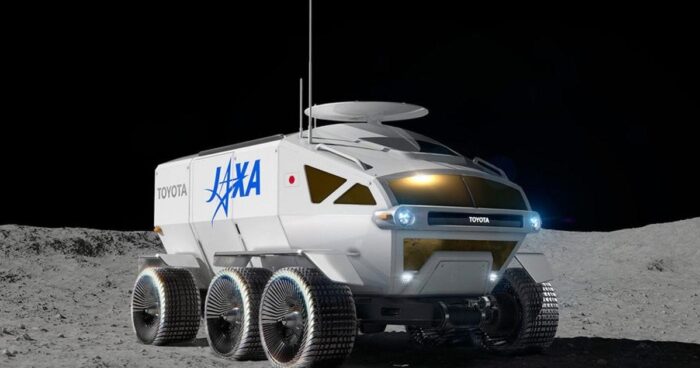
2.The Japan Aerospace Exploration Agency (JAXA) and Toyota have unveiled the name of their joint project, the crewed lunar rover, which will be called “Lunar Cruiser”. It was previously announced that JAXA and Toyota would be developing a manned, pressurized lunar rover that uses fuel cell electric vehicle (FCEV) technologies.
The name is a reference to Toyota’s Land Cruiser SUV, making reference to its durability, quality and reliability. The Agency further explained that the name Lunar Cruiser had been given to the project because it is something that is familiar to the people involved on the project and to the general public.
JAXA and Toyota are furthering their efforts to create new partners with the aim of joining “Team Japan”, they have been in discussions with several industries, to focus on how this project could be the start of a lunar surface-based society.
Click here to learn more about this story:
https://global.jaxa.jp/press/2020/08/20200828-1_e.html
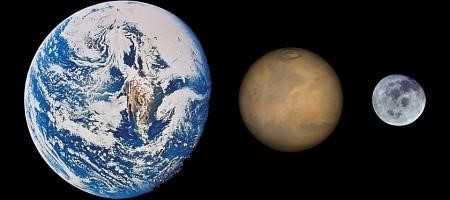
3.In an attempt to protect the Moon, Mars and Earth, NASA has announced new policies that will ensure the prevention of contamination due to human spaceflight missions. Two NASA Interim Directives (NIDs) were published detailing new requirements for human and robotic missions scheduled for the Moon and Mars. NID 8715.128 details the control of forward terrestrial biological contamination associated with all NASA and NASA-affiliated missions that are intended to land, orbit, or otherwise encounter the Moon. Whilst NID 8715.129 reforms previous policies that can ensure that all knowledge gained from previous space explorations and at the ISS will be leveraged to prevent harmful forward and backward biological contamination.
These new reforms have been made with the purpose not only of protecting and preserving the Moon and Mars but also to ensure that as we look for signs of life on these planets, we don’t unintentionally end up discovering something that was left there by previous human or robotic exploration missions.
Click here to learn more about this story:
https://www.space.com/nasa-updates-planetary-protection-policies-moon-mars.html
https://www.nasa.gov/feature/nasa-updates-planetary-protection-policies-for-robotic-and-human-missions-to-earth-s-moon
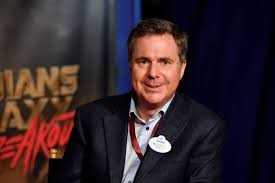
4.Virgin Galactic has a new CEO, Michael Colglazier, a former Director at Disney Parks International. This leadership change comes ahead of Virgin Galactic’s commercial service launch. Michael Colglazier will be replacing George Whitesides, who will take the position of Chief Space Officer. After 30 years of experience in developing and growing consumer oriented companies, Michael will be overseeing the operations and development of the vertically integrated aerospace and space travel company.
Click here to learn more about this story:
https://www-businessinsider-com.cdn.ampproject.org/c/s/www.businessinsider.com/virgin-galactic-ceo-michael-colglazier-george-whitesides-chief-space-officer-2020-7?amp

5. In an exceptional and much necessary move, the ClearSpace-1 mission has started. A mission commissioned by the European Space Agency. This is the first time a space agency has selected and funded a program designed to clear space debris. Space Debris has become a huge problem over the last few years, the CEO of ClearSpace reports that currently there are 2,000 live satellites and more than 3,000 failed ones. And with programs scheduled such as Starlink, OneWeb, Project Kuiper, etc. that are creating mega-constellations with hundreds if not thousands of satellites on low Earth orbit, the problem will increase exponentially. The program is destined not only to help by contributing to the solution of the problem but also to demonstrate what technology is needed for the clean up of space debris. The first mission is scheduled for 2025, with the aim of capturing the upper stage of the Vega rocket launched in 2013.
Click here to learn more about this story:
https://www.esa.int/Safety_Security/Clean_Space/ESA_commissions_world_s_first_space_debris_remova
https://actu.epfl.ch/news/clearspace-1-mission-kicks-off/
Did you know…?
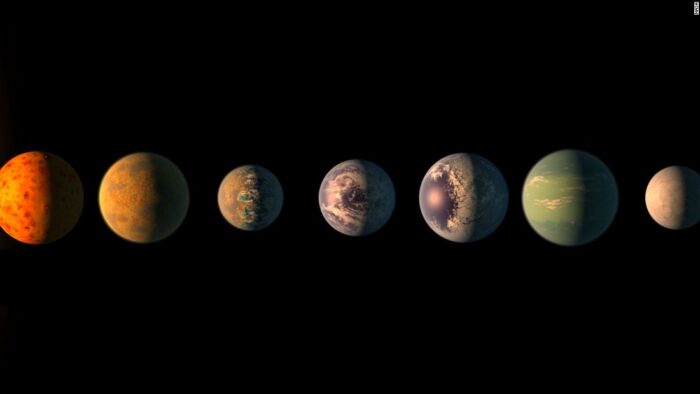
50 new planets have been discovered using Artificial Intelligence. Astronomers and computer scientists from the University of Warwick built a machine learning algorithm which analysed old NASA data that contained the information of several potential planets. This is the first time AI has been used to validate the existence of other planets.
In our search for life outside planet Earth, AI that can identify other planets could be extremely helpful, diversifying the methods for validating other planets could simplify and accelerate our hunt for other possibly habitable planets in our universe.
Click here to learn more about this story:
https://edition.cnn.com/2020/08/26/tech/ai-new-planets-confirmed-intl-hnk-scli-scn/index.html?utm_source=twCNN&utm_content=2020-08-26T06%3A51%3A02&utm_medium=social&utm_term=link
Cosmonauts is thrilled to announce that we are supporting and leading the seed funding round pitch for SmallSpark Space Systems – one of the UK’s fastest-growing aerospace ventures working to redefine the UK space sector by bringing to market a new generation of low-cost, rapid to produce launch vehicles, allowing customers to access space from the UK for the first time ever.
The seed round is launching next week. If you are interested in learning more, please contact the project PM- Laura Landa Ortega on [email protected]
Follow us on social media
Categorised in: Space Tech, Staff Blog

